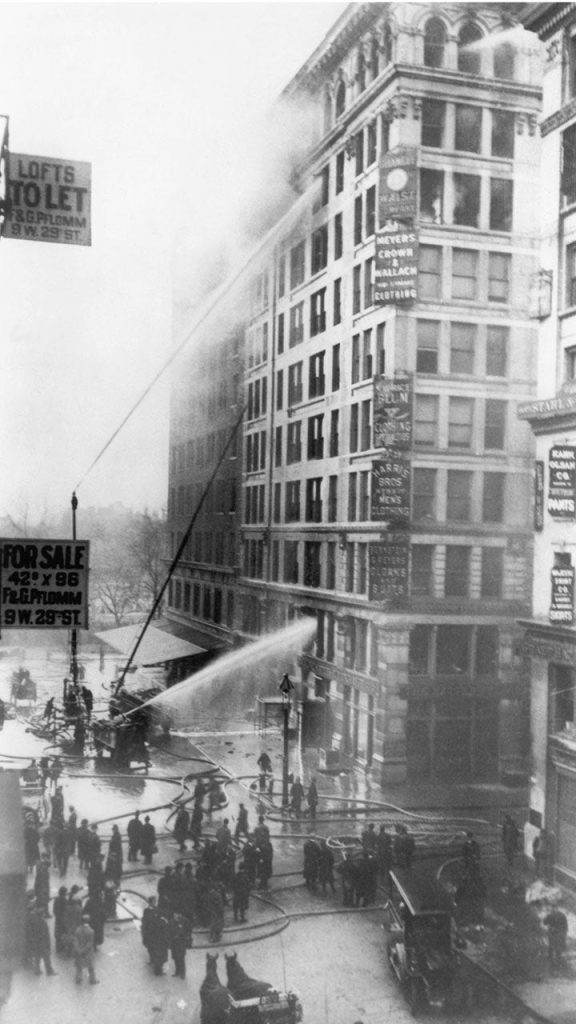A fire at the Triangle Shirtwaist Factory in New York City on March 25, 1911, killed 146 people, most of whom were young women and recent immigrants. The factory owners, Max Blanck and Isaac Harris, were known as the “shirtwaist kings” and were opposed to unions and workplace safety measures. The fire broke out on the 8th floor of the factory and quickly spread, killing those trapped inside. The doors were locked, and firefighters were unable to reach the upper floors with their ladders, leading to many workers jumping to their deaths to escape the flames. The fire remained the deadliest workplace incident in New York City until the Sept. 11 terrorist attacks in 2001.
It is still not known what caused the fire, although it is believed to possibly have been from an improperly discarded cigarette. The owners of the factory, Blanck and Harris, were tried and acquitted of charges of manslaughter due to the inability to prove that they were aware of the locked doors. Nearly three years after the fire, the owner of the Asch Building settled 23 individual civil suits from the families of those who died in the fire, with settlements averaging about $75 per person. Despite the tragedy, the deaths of the 146 workers sparked a series of new worker protection reforms, laws, and policies that were enacted in response to the fire.
Frances Perkins, who became Secretary of Labor in 1933 under President Franklin D. Roosevelt, witnessed the Triangle fire firsthand and was deeply affected by the devastation. She, along with other leaders like New York Gov. Al Smith, worked to pass new workplace safety standards into law in the State of New York as a result of the fire. These standards set an example for the rest of the country and led to the implementation of various worker protection measures to prevent such tragedies from happening again. The Triangle fire ushered in a new era of workplace safety reforms and policies that aimed to protect workers and ensure their safety on the job.
The Triangle Shirtwaist Factory fire highlighted the dangerous working conditions and lack of safety measures in place at the time, particularly for young immigrant women in the garment industry. It brought attention to the need for improved workplace safety standards, including proper fire escapes, exits, and safety training for employees. The tragedy served as a catalyst for change and inspired advocates like Frances Perkins to fight for better working conditions and protections for workers. The fire ultimately led to the passage of new laws and regulations that aimed to prevent similar disasters from occurring in the future, marking a significant turning point in the history of workplace safety in the United States.
The victims of the Triangle Shirtwaist Factory fire ranged in ages from 14 to 43, with most being in their late teens and early 20s. The majority of the victims were women, many of whom were recent immigrants from Eastern Europe and Italy. The factory owners, Blanck and Harris, were known for their harsh treatment of workers and opposition to unions. They maintained low wages and poor working conditions at the factory, which ultimately contributed to the devastating outcome of the fire. The tragic event shed light on the exploitation of workers and the need for stronger labor protections to ensure the safety and well-being of employees in the workplace.
Despite the tragic loss of life in the Triangle Shirtwaist Factory fire, the event sparked a movement for change and greater awareness of the importance of workplace safety. The fire served as a wake-up call to the inadequate safety measures in place at the time and prompted action to address these issues and protect workers from harm. The legacy of the fire lives on through the reforms and protections that were implemented in response to the tragedy, highlighting the importance of learning from past mistakes and working towards a safer and more equitable work environment for all employees.


